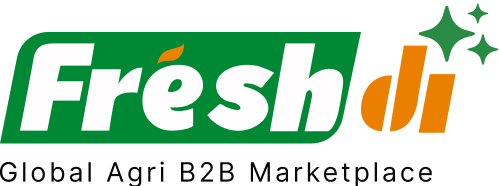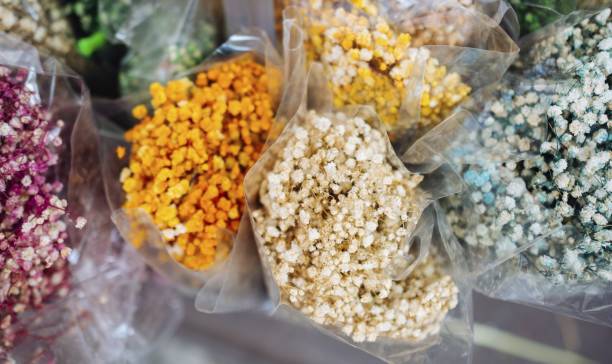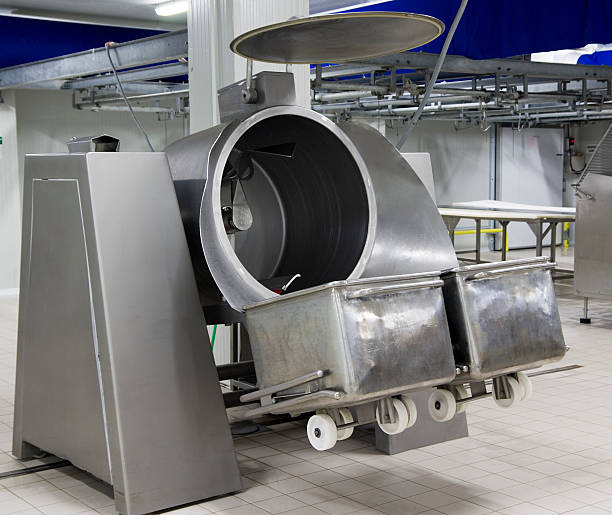Introduction – China’s Dried Flowers Market: A Quantitative Overview
China has blossomed into the world’s dried flowers powerhouse—and the numbers don’t lie. In 2024 alone, China exported over 24,000 metric tons of dried flowers, claiming a significant share of the global market. From rustic wedding bouquets in Paris to eco-chic home décor in Los Angeles, chances are those dried blooms came straight from Chinese soil.
So, what’s the takeaway for buyers and businesses? Simple. If you’re sourcing dried flowers, China is where you want to look. But with hundreds of suppliers vying for attention, identifying the best ones requires more than just pretty pictures on a website. You need hard data, verified credentials, and real market insights.
And that’s where Freshdi, a powerful B2B sourcing platform, comes in—offering not just supplier directories but actionable intelligence, RFQ tracking, and verified performance data to help you make smarter purchasing decisions.
Ready to dig in? Let’s explore the dried flowers export landscape—and uncover the Top 7 Dried Flowers Suppliers in China for 2025.
Deep Dive – Key Production, Export Statistics & Market Signals
China’s Production Powerhouse
Dried flowers aren’t just a trend—they’re a thriving sector of China’s agricultural and handicrafts economy. In 2024:
- Production Volume: Over 24,000 metric tons of dried flowers were cultivated and processed.
- Top Production Hubs: The provinces of Yunnan and Zhejiang lead the charge, thanks to their ideal climate and long-standing floriculture traditions.
Export Performance
China’s dried flower exports are flourishing:
- Export Value in 2024 reached approximately $16.98 million.
- Top Destinations:
- United States – Popular for interior design and weddings.
- European Union – Germany and France lead in importing.
- Southeast Asia – Thailand and Vietnam spike seasonal demand.
Demand Data Reflections
According to RFQ volumes and supplier interactions on platforms like Freshdi, demand is surging globally. Here’s what the numbers reveal:
- Over 26 million decorative dried flower bundles sold worldwide in 2024.
- 61% of these were crafted using air-dried or oven-dried techniques—methods that preserve both beauty and eco-friendliness.
This aligns with rising consumer interest in sustainable, biodegradable decoration options—great news for exporters who cater to green-conscious markets.
Top 7 Verified Dried Flowers Suppliers in China – Based on Export Data
Here’s your curated, data-backed list of the Top 7 Dried Flowers Suppliers in China for 2025. These companies rank high based on export volumes, international presence, verified certifications, and real buyer feedback from Freshdi.
- Yunnan Eily Trade Co., Ltd.
- Based in Yunnan, this supplier leverages its proximity to raw floral resources.
-
Known for a wide range of air-dried floral species and fast shipment times.
- Specializes in both artificial and dried floral arrangements.
-
Popular in the wedding supply and home décor industries.
- Located in the vibrant Yiwu market area.
-
Offers customized designs for global retailers and event planners.
- Focused on natural, rustic dried flowers for eco-friendly packaging and gifting.
-
Rated highly for consistent product quality and reliable exports.
- Offers dried florals with modern packaging and seasonal themes.
-
Supplies to both bulk retailers and boutique shops.
- A standout for everlasting flowers with vivid coloring and natural textures.
-
Known for their stylish bundles and event-friendly packaging.
- Combines creative arts and traditional floral drying.
- Offers themed dried floral sets for different holidays and interior styles.
Dynamic Ranking Note
Keep in mind, rankings shift. Platforms like Freshdi offer dynamic supplier ratings—think “Top Exporter of the Month” or “Trending Supplier in Q2.” These reflect real-time performance based on buyer interactions and RFQ activity.
Market Navigation – Statistical Trends, Pricing Analysis & Export Dynamics
Which Dried Flowers Are in Demand?
Trends shift with seasons and culture. Here’s what’s hot in 2025:
- Pampas Grass – Still a favorite in Western décor.
- Lavender & Eucalyptus – Sought for aromatherapy and minimalistic arrangements.
- Billy Buttons (Craspedia) – Trending in modern wedding bouquets.
- Preserved Roses – High-end option for gifts and anniversaries.
Freshdi’s RFQ data shows a 26% YoY rise in lavender requests, especially from U.S. and German buyers.
Seasonal Pricing Patterns
Dried flower prices are surprisingly seasonal:
- Peak Prices: September–December (wedding and holiday décor season).
- Off-Peak Deals: March–May (spring clearances).
Historical pricing data from suppliers on Freshdi reveals that buying in off-peak months can save up to 18% on bulk orders.
Export Dynamics to Watch
- Lead Time Sensitivity: Buyers want faster shipping—suppliers offering consolidated logistics perform better.
- Certifications Matter: Suppliers with ISO, FSC, or REACH compliance are preferred by European buyers.
- Eco-Friendly Packaging: RFQs increasingly request biodegradable or recycled materials.
Conclusion – Leveraging Data for Informed Procurement
It’s clear—China is a global leader in dried flowers, thanks to its sheer production capacity, competitive export prices, and growing reputation for quality.
But choosing the right supplier isn’t just about cost. It’s about data-driven decision-making.
With platforms like Freshdi, you can:
- Verify supplier performance with real export data.
- Track market demand trends to align with consumer preferences.
- Access RFQ insights to time your purchases and negotiate better.
So, whether you’re a retailer prepping for the holiday season or a wholesaler looking to expand your offering, remember this: the flowers may be dried, but the opportunities? They’re in full bloom.
Key Takeaways
- China exported over 24,000 metric tons of dried flowers in 2024.
- Yunnan and Zhejiang are top production provinces.
- Major export destinations include the U.S., E.U., and Southeast Asia.
- Top suppliers like Yunnan Eily Trade Co. and Yiwu Ivy Handicrafts lead the market.
- Freshdi helps buyers access verified supplier data and dynamic market insights.
Buyer Checklist: How to Source Smart in 2025
✅ Verify supplier export history (check Freshdi ratings)
✅ Request samples and packaging photos
✅ Ask for certifications (especially for EU imports)
✅ Monitor seasonal pricing trends
✅ Use Freshdi’s RFQ feature to negotiate competitive rates
Future Outlook – What’s Next for Dried Flowers in China?
Looking ahead, China’s dried flower exports are expected to keep growing, especially as:
- Sustainability becomes more than a trend—it’s a requirement.
- Emerging markets in Africa and the Middle East increase demand.
- Digital sourcing platforms like Freshdi streamline global B2B trade.
In short? The future is blooming bright.
How Platforms Like Freshdi Empower Global Buyers
Freshdi isn’t just a directory. It’s your sourcing command center:
- Live RFQ Trends – See what other buyers are asking for.
- Verified Supplier Profiles – With export history and real reviews.
- Market Intelligence Tools – Spot seasonal trends and plan ahead.
- Dynamic Rankings – Know which suppliers are gaining traction.
In a market as colorful and competitive as dried flowers, Freshdi gives you the edge.
References
- marketgrowthreports.com – Dried Flowers Market Report 2024
- gtaic.ai – Dried Flowers Export Data 2025
FAQs
1. What are the most popular types of dried flowers exported from China?
Pampas grass, lavender, eucalyptus, billy buttons, and preserved roses are among the top exported varieties.
2. When is the best time to buy dried flowers from China?
Off-peak months like March to May offer lower prices and better bulk deals.
3. How do I verify if a supplier is reliable?
Use platforms like Freshdi to check export performance, certifications, and buyer reviews.
4. Are Chinese dried flowers eco-friendly?
Many suppliers now use air-drying techniques and biodegradable packaging to meet global eco-standards.
5. Can I request custom packaging or flower arrangements?
Yes! Most top-tier suppliers offer OEM/ODM services for branding, design, and packaging customization.





